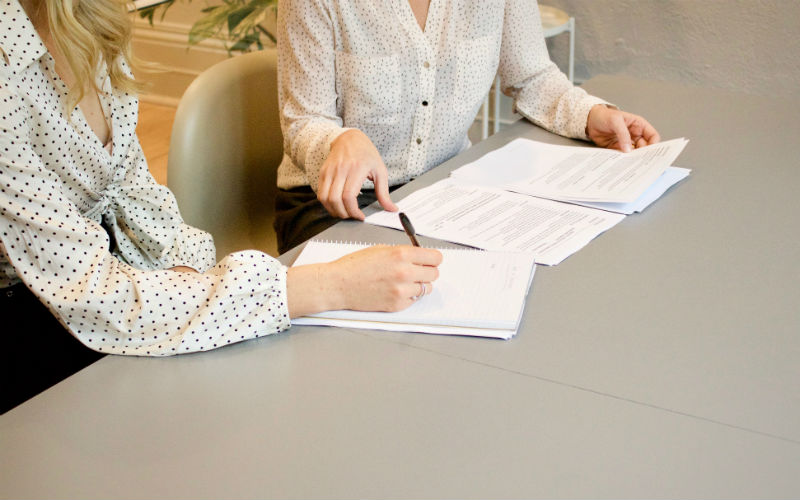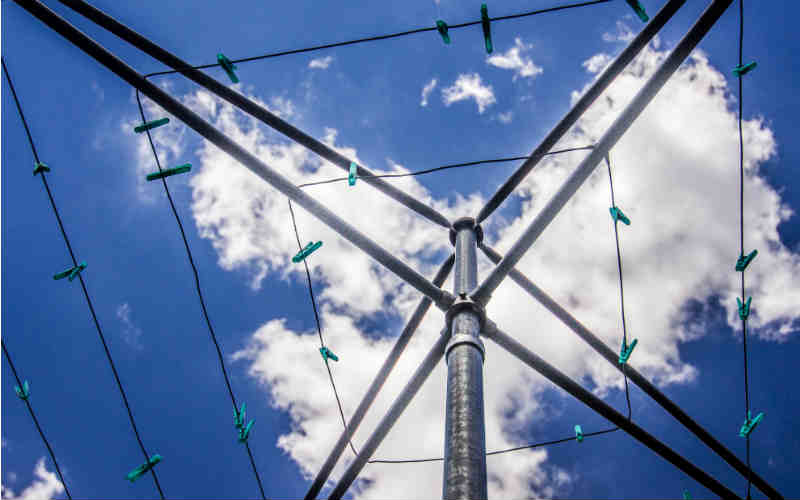A loan-to-value ratio, or LVR, is the size of your home loan in relation to your property’s value, expressed as a percentage.
In mathematical terms, it's calculated by dividing what you’re looking to borrow by how much the property’s valued at (as assessed by the lender) and multiplying it by 100 to give a percentage figure.
So, if you’re after a $600,000 loan and the property you want to buy has been valued at $800,000, the loan-to-value ratio, or LVR, for your loan is 75%.
Your LVR is important because it can determine what home loans you can qualify for and even what your interest rate will be. Borrowers with lower LVRs can generally qualify for home loans with lower interest rates.
A good LVR can also help you avoid certain home loan fees and charges, including lenders mortgage insurance (LMI). We'll show how important this can be shortly.
Keeping track of your LVR when house hunting is important as it gives you a good indication of the buying power of your deposit.
What is a good loan-to-value ratio?
For many lenders, 80% or lower is generally considered to be a good LVR. To achieve that, a borrower’s deposit should be at least 20% of the purchasing price.
Most lenders will not charge lenders mortgage insurance on loans with an LVR of 80% or less.
However, 80% isn’t always the magic figure. Some lenders may require an LVR of 60% or lower for properties they consider higher risk (for example, properties deemed at risk of significant falls in value), or for borrowers wanting to qualify for extra low-rate home loans.
What is a good loan-to-value ratio for an investment property?
Ideally, your LVR should be 80% or lower for an investment property, just as it should be for an owner-occupied one. However, investors chasing big returns may be willing to have a higher LVR in order to maximise their leverage and minimise their capital outlay.
A low LVR is one way to keep interest costs down on investment home loans since they tend to come with slightly higher interest rates. A 95% LVR, for example, will see investors paying substantially more for their loans compared to those with lower LVR loans. This is because they’re likely to be paying a higher interest rate on a greater loan amount.
If you’re a property owner looking to use the equity in your home to buy an investment property, many lenders will often require you to have at least 20% of the property’s value in equity. However, all lenders' policies differ considerably. It’s worth shopping around.
See also: Property Investment
How to calculate your LVR
As we’ve covered, lenders typically calculate your LVR by dividing the loan amount by the property’s value and multiplying it by 100.
It’s important to note here that your lender will use the property’s value for this calculation, not its price. There can sometimes be a considerable gap between these two figures that can greatly affect the LVR.
Let’s consider an example. If you were a first home buyer looking at a property valued at $550,000 and had a $120,000 deposit, you would need to borrow $430,000 from your lender. By dividing the loan amount ($430,000) by the value of the property ($550,000), we get 0.78 which, multiplied by 100, means the loan-to-value ratio for this loan is 78% - under the desirable 80% benchmark.
You can see the important role a deposit plays in the equation. Simply put, the more deposit you can put down for your home loan, the less you’ll need to borrow from your lender and the lower your LVR will be.
Here’s a look at how varying deposits can affect the LVR for the same property value.
|
Property value |
Deposit |
Loan amount |
LVR |
|
$550,000 |
$55,000 |
$495,000 |
90% |
|
$550,000 |
$82,500 |
$467,500 |
85% |
|
$550,000 |
$110,000 |
$440,000 |
80% |
|
$550,000 |
$137,500 |
$412,500 |
75% |
|
$550,000 |
$165,000 |
$385,000 |
70% |
|
$550,000 |
$220,000 |
$330,000 |
60% |
If you need help estimating your potential LVR, our Loan-to-Value Ratio Calculator will do the maths for you based on the value of the property you’re considering and the deposit you have.
See also: Which Lenders offer 90% LVR home loans?
How can LVR affect your interest rate?
LVR can impact the interest rate on your home loan as many lenders apply a lower interest rate to borrowers with lower LVRs. Why? Because these borrowers represent a lower risk to lenders.
A low LVR means the property should be worth comfortably more than the debt that’s owed against it. So, if the borrower were to default on the loan, the lender would have a good chance of easily recovering the debt if it were to repossess the borrower’s property and sell it.
How can LVR affect your LMI cost?
As we mentioned earlier, along with potentially being subject to a higher interest rate, borrowers with a higher LVR can also be hit with Lender’s Mortgage Insurance, or LMI.
LMI acts as something of a safety net for the lender should a borrower be unable to make their regular loan repayments. Just to be clear, LMI is not insurance for the borrower but for the lender, although the borrower pays for it.
LMI can vary in price depending on the lender and what LVR percentage you have but can amount to tens of thousands of dollars.
The standard benchmark when LMI is applied is for LVRs of 80% and higher. According to the Savings.com.au LMI estimator, someone borrowing a 30-year loan at 90% LVR for a $550,000 property could be hit with an LMI premium of more than $9,000.
Here’s a quick look at what a buyer can expect to pay for LMI based on varying house prices and LVRs:
|
Estimated property value |
95% LVR LMI cost |
90% LVR LMI cost |
85% LVR LMI cost |
|
$200,000 |
$6,137 |
$2,574 |
$1,299 |
|
$400,000 |
$15,428 |
$6,552 |
$3,390 |
|
$600,000 |
$31,008 |
$9,828 |
$5,100 |
|
$800,000 |
$41,344 |
$14,400 |
$6,800 |
It’s worth keeping in mind, not all LMI calculations are the same. They vary between lenders and insurance providers and can be based on a number of factors.
But as you’ll note, LMI can be a major expense in buying a property. So, if you want to avoid LMI and put yourself in a good position to qualify for lower interest rates, your best bet is to have a deposit of at least 20%.
Another way you could avoid LMI is by buying a property in a lower price bracket, or by waiting longer to save up a larger deposit.
From time to time, various lenders will waive or offer low-cost LMI as part of a promotion or special deal. But sometimes these home loan offers can come with higher interest rates so make sure you do your calculations as to whether they’ll provide a net cost-benefit over the term of your loan.
Case studyTim was looking at purchasing an apartment for $450,000 and had $22,500 as a deposit. If he had calculated his loan-to-value ratio before applying for a loan, he would have discovered that he had an LVR of 95%. Because of this high ratio, the lender decided the risk of lending to him was too high and rejected his application. Not to be deterred, Tim decided against buying at that time and concentrated on building his deposit to $90,000. This achieved an LVR of 80% on another property. When he reapplied for a loan at a later date, it was approved by the lender, and he wasn’t required to pay LMI. |
Lender valuation vs. purchase price
It’s quite common that the lender’s official valuation of the property differs from its sale price. Official valuations take many factors into account and are inherently conservative.
A variation between the property valuation and the price you’ve agreed to pay also affects your LVR, and presents two scenarios:
1. If a valuation is less than the purchase price
This tends to be the most common scenario. When a property is valued at less than its purchase price, a borrower's LVR will increase as they’ll need to borrow a larger proportion of their property's value.
For example, if the purchase price of a home is $600,000 and you’re applying to borrow $450,000, you would estimate your LVR to be 75% - enough to avoid LMI. But when the lender carries out its valuation, it may deem the home to be worth $530,000, which would set your LVR at just under 85%.
In this case, the lender may:
-
Go ahead with the loan, but make you pay LMI; or
-
Turn down your loan application, depending on its lending policies
It can sometimes be beneficial to get an independent valuation done before you apply to your lender to avoid this happening.
2. If a valuation is higher than the purchase price
Alternatively, if the lender values the property and finds it's worth more than the purchase price, your LVR will decrease, as you’re borrowing a smaller amount of the overall value.
This also means you’re likely getting the property at a bargain price but, alas, this scenario is less common. Independent valuations generally tend to come in less than market prices, sometimes considerably less.
This may not always be a bad thing. Sometimes an independent valuation can alert you to setbacks or pitfalls with a property that you may not have noticed or considered.
Do you always need a lower LVR?
As we’ve covered, there are many good reasons why you’d aim for an LVR lower than 80%, but sometimes it may not be practical.
There can be times when it’s worth purchasing with a lower deposit and copping the LMI to ensure you get into a fast-rising property market. Saving for a home deposit is a long-term pursuit and during this time, the value of the home you’ve got your eye on could increase significantly.
A $25,000 LMI premium could more than pay for itself if you stand to gain $100,000+ on the value of the home, and you’d be kicking yourself if you missed out on the opportunity because you chose to save for a higher deposit.
If recent house price gains are anything to go by, the capital gains on your property could far exceed any savings you make by not paying lenders mortgage insurance.
Sometimes it’s worth just jumping in with a 5-15% deposit. Even if you’re paying a higher interest rate on your loan, you can always refinance to one with a lower rate when your loan-to-value ratio lowers. This can happen through a rise in your property value raising your equity in the property, or through you paying down some of the loan amount, or both.
The following calculators could help you reach a decision on whether you’re best to wait for a 20% deposit or not:
100% LVR home loan: the maximum loan-to-value ratio
It’s possible to get a home loan without paying a deposit – that is, having an LVR of 100% or more – but not by yourself. You may be approved for a home loan with an LVR of 100%, or even as high as 110% (for example, if you’re consolidating other debts into the home loan) through a guarantor.
This is a person (usually a parent) who agrees to take responsibility for repaying the home loan should you fail to make repayments.
Guarantors take a considerable risk in signing up for such loans, so it’s not a decision that should be made lightly. But by making extra repayments on your mortgage or having the value of your property increase, the guarantor may become unnecessary.
Guarantor home loans are popular among first home buyers or people with lower incomes who struggle to put together a substantial deposit.
You could also check to see whether you’re eligible for the federal government’s Home Guarantee Scheme which offers varying guarantees on home loans for people with low deposits:
Savings.com.au’s two cents
Your LVR is the indicator of how much of the property’s value you have to repay to the lender. In simple terms, a higher LVR can cost you considerably more over the life of the loan because:
-
You may have a higher interest rate
-
You may have to pay LMI
-
You are borrowing a larger amount
It’s important to have some idea of what your loan-to-value ratio will likely be when you’re looking for suitable properties. Keeping your LVR under 80% can give you a wider choice of lenders and more competitive interest rates. It can also help you avoid LMI.
While an 80% LVR is a good target, it might not always be accessible, particularly in a hot property market where home values can rise faster than your deposit balance.
In such cases, it can pay to jump in and find a lender who’ll give you a loan with a higher LVR. There are many loan products on the market that cater for borrowers in these circumstances. A mortgage broker can steer you in the direction of lenders specialising in these loans.
See also: Which lenders offer 95% VLR home loans?
Lender Home Loan Interest Rate Comparison Rate* Monthly Repayment Repayment type Rate Type Offset Redraw Ongoing Fees Upfront Fees Max LVR Lump Sum Repayment Extra Repayments Split Loan Option Tags Features Link Compare Promoted Product Disclosure
Promoted
Disclosure
Promoted
Disclosure
Photo via Tierra Mallorca on Unsplash

Ready, Set, Buy!
Learn everything you need to know about buying property – from choosing the right property and home loan, to the purchasing process, tips to save money and more!
With bonus Q&A sheet and Crossword!









 Bea Garcia
Bea Garcia
 Denise Raward
Denise Raward
 Harry O'Sullivan
Harry O'Sullivan

 Emma Duffy
Emma Duffy

